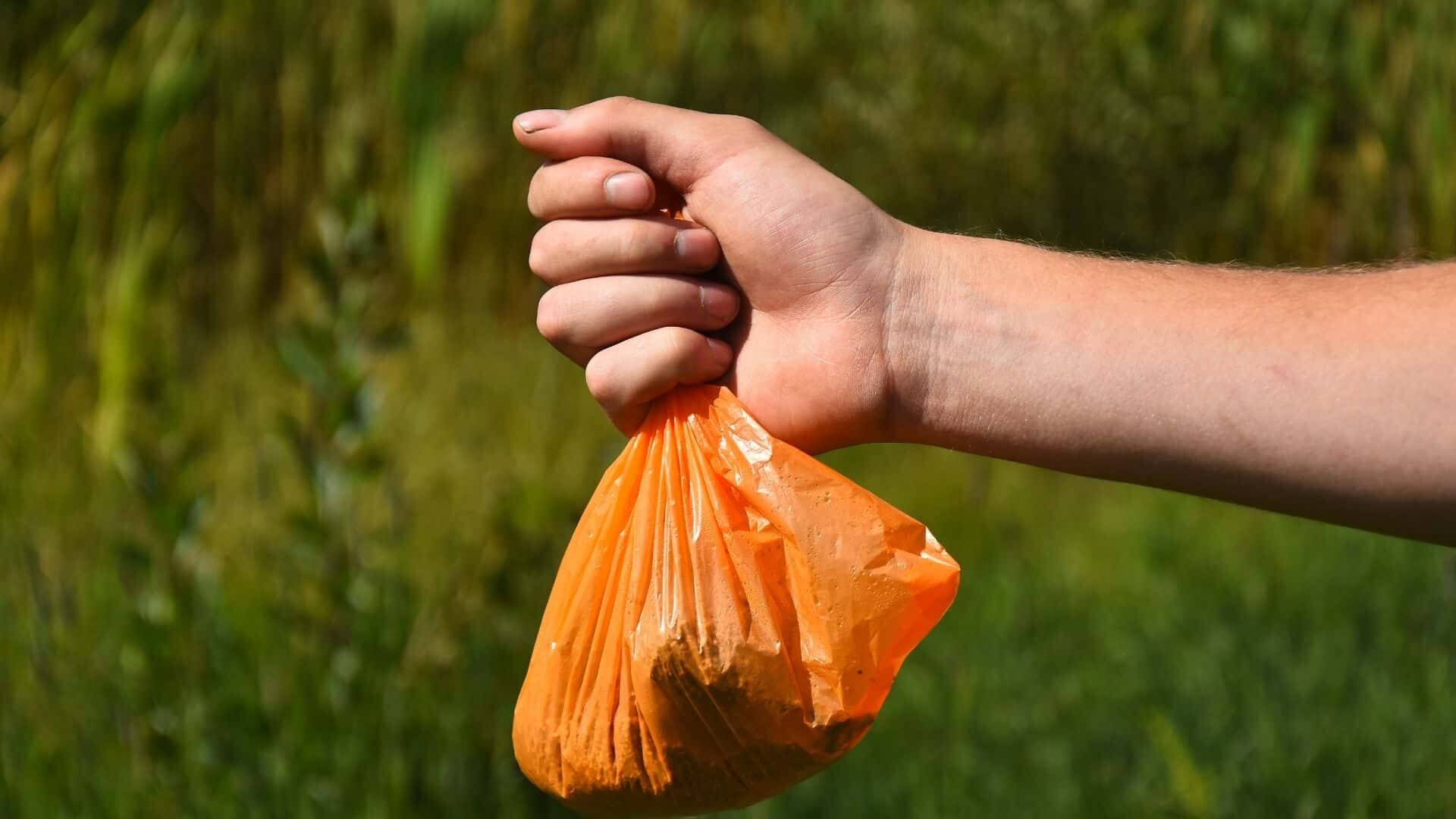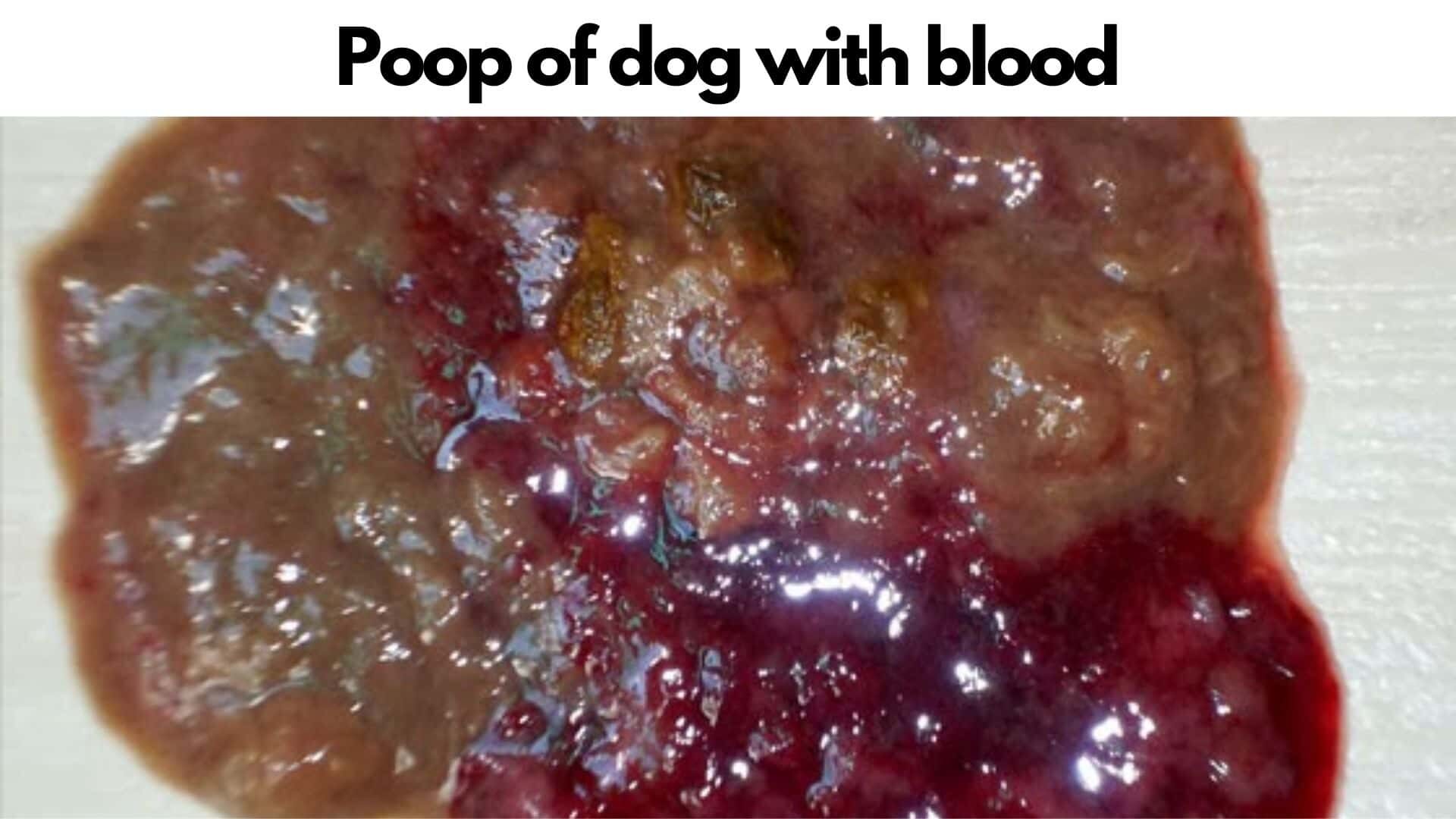The presence of blood everywhere on or around our pets causes us to be concerned—and for good reason. Blood in a dog’s feces can be a sign of a wide variety of health problems. If you know what you’re looking at, it can help you communicate more effectively with your vet.
All of us inspect our dog’s excrement, no matter how disgusting it may seem. It’s also a good idea to get into the practice of checking your dog’s excrement on a regular basis. It is possible to learn a lot about a dog’s health by looking at its feces (or “stool”).
One of the earliest indicators of illness in your dog is a change in the color, consistency, and frequency of your dog’s feces.
The presence of blood in your dog’s feces is a cause for concern. If your dog is pooping blood, it’s helpful to know what may have caused it and what to do about it.
Why is there poop in dog’s blood?
Finding blood in your dog’s feces is unsettling and can lead to panic. There are many possible causes of blood in your dog’s stool. Pooping blood is frequently caused by dietary allergies or intolerances in dogs as well as gastrointestinal disorders such as colitis or colitis-like symptoms, as well as trauma or injury to the body. As a precaution, you should always consult a veterinarian if your dog’s stools are bloody or appear to be bloody, as these circumstances could be indicative of a more serious health issue, such as cancer or poisoning.
Contact your veterinarian or, if he or she is not available, the local Vets Now emergency clinic if you have any concerns about your dog’s well-being.
What does blood in a Dog’s Poop look like?
Stool that is bloody might occur in a variety of ways. There are many ways to tell where in the digestive tract a blood sample comes from.
1. Hematochezia: Dog Poop with Reddish Blood
Hematochezia is the medical word for when a dog’s feces contains bright crimson blood. Because it originates from the lower digestive tract, this blood is an intense shade of red (colon or anus and rectum).
Also, it’s bright red because it hasn’t been digested, which makes it appear fresh when it departs the body.
Hematochezia is commonly associated with diarrhea and has a reddish tint to it. Increased frequency and amount of excrement in the dog’s bowels are expected. From a soft, molded texture to a fully liquid state, the variety in consistency is vast.
Mucus and blood can sometimes be found on the outside of some feces that has been created. This also suggests a problem with the lower digestive tract, such as the colon.
2. Black and Tarry Poop: Melena in Dogs
It is dark to virtually black and tarry when blood originates from the upper digestive tract (the stomach or small intestine).
The presence of blood in the feces can be mistaken for dark stool by certain owners. The term for this is “melena.”
This can include inflammation, ulcers, and even cancer in dogs’ upper digestive tract. Melena can arise with any of these conditions.
Dog feces that has been treated with melena appears more solid.
If your dog urinates only blood, it’s vital to know that it’s possible.
Blood may be the only thing passing through the intestines if the feces is watery or empty.
What are the different causes of blood in dog’s poop?

There are a few possibilities if your dog’s stool is reddish-orange and there’s nothing to worry about. Even if you observe a small quantity of blood in your dog’s feces only once, you may be able to dismiss it or bring it up with your veterinarian at your next appointment.
1. Rash or other irritations of the hemorrhoids
Hemorrhoids or other irritants near the anus can cause bright red blood to appear on the exterior of the stool. Take a look at your dog’s body to see if you can find anything that might have caused the problem.
2. The anal glands were improved
Your dog’s stool may contain a little amount of bright crimson blood if its anal glands are enlarged. Groomers and veterinarians can help if you think this is the case.
3. Switching to a new food or eating something unhealthy
Your dog’s digestive tract may be infected, resulting in bloody stool (this can occur anywhere in the stomach, small intestine, colon, or anal region).
“Gastroenteritis” and “hemorrhagic gastroenteritis” are two of the most common disorders affecting the digestive tract (GI tract).
Your dog may exhibit one or both of these symptoms if he or she has eaten something that should not have been consumed. As an example, non-food things like:
- Bones
- Sticks
- Toys
- Toxins
- Garbage
When a new food, treat, or chew toy is introduced, or when your dog eats another pet’s food, it might lead to diarrhea.
4. Cancer or infections of the gastrointestinal tract
Among the other illnesses that might cause blood in the feces are:
- Infectious diseases (bacteria or viruses such as parvovirus)
- Parasitic organisms (intestinal worms, coccidia, giardia)
- In some circumstances, cancer might be a sign of something more serious.
- Blood Clotting Disorders or Disorders Affecting Blood Clotting
- Conditions “outside” of the digestive tract can also cause bloody stool.
The following are examples of conditions that may interfere with the proper coagulation of blood:
- Disorders of the bleed
- Toxins
- Hepatitis B and C
- Nephrology
- Inflammatory and autoimmune conditions
- Homosexual dysfunctions
- Cancer
5. Parvovirus
Puppies are most vulnerable to parvovirus, although it can infect any dog who has not been immunized against it. Lethargy, vomiting, and bloody diarrhea are all common symptoms of parvovirus infection. This sickness kills a lot of puppies.
6. Reddish-brown or black feces in your dog
Dark crimson or black blood is almost always a warning sign that something is seriously wrong. If you find this type of blood in your dog’s stool, you should immediately take him to the vet, and you should seriously consider going to an emergency vet if your usual vet is unavailable at the time.
Melena is a dark crimson to black blood found in your dog’s stool. It’s not usually a sign of something serious, but you should take your dog to the vet straight away just in case. Your doctor will be able to pinpoint the problem and conduct the necessary tests if you pay attention to any other symptoms your dog may be showing along with this type of diarrhea.
What should I do if my dog has poop in it?

A veterinary emergency, bloody diarrhea or vomiting necessitates rapid attention since it can be lethal if left untreated.
At Carolina Veterinary Specialists, we have board-certified internal medicine veterinarians on staff that can provide the highest level of care for pets with internal health issues. Even life-threatening situations necessitate the services of an emergency veterinary team like those provided by the one we have.
1. Diagnosis
An accurate diagnosis of bloody vomit or diarrhea might be difficult. If standard diagnostic methods fail to identify the problem, more intrusive procedures may be required.
2. Obtaining a patient’s medical record
The more details you can provide the veterinarian, the better. Your dog’s medical history may include the following:
- When it comes to gastrointestinal issues, whether they’ve had blockages or actual obstructions in the past.
- Record of immunization (to rule out parvovirus)
- Diarrhea and/or vomiting severity Since it began, how has it progressed?
3. The examination
- Checking the stool or vomit to see whether there is blood in it
- Abdominal palpitations to look for signs of discomfort or blockage
- Blood loss or dehydration may indicate a problem with cardiovascular function.
- Dehydration can be detected by a simple skin test.
- Examining mucous membranes for signs of bleeding
- Regular blood or biochemical testing
- Biological tests (e.g. liver, blood sugar)
- If hemorrhagic gastroenteritis is suspected, a hematocrit (packed cell volume) test will confirm this.
- Endoscopy/Radiographs
In order to rule out any physical obstacles such as ulcers, tumors, or blockages in the intestines.
4. Study of the feces
To discover any possible parasites or microbiological organisms, we conduct cultural tests.
5. Treatment
Dogs generally respond well to treatment and make full recoveries in the majority of cases. Your dog’s treatment will be determined by the underlying cause of his ailment.
The following are examples of possible therapies:
- Surgical treatments for tumors, ulcers, or other physical obstacles.
- Medications to help ease the discomfort in the bowels
- Treatment of hemorrhagic gastroenteritis with electrolytes and fluids
- Certain infections require antibiotic treatment.
- Hypovolemic shock is treated with corticosteroids.
What are the treatment of dogs that are pooping blood?
Dog feces can be caused by a variety of things; thus the therapy will vary depending on the underlying issue.
The veterinarian will present a list of possible causes after inspecting your dog. To find out what’s causing it, they may need to run a battery of tests, including x-rays, ultrasounds, and even feces sampling.
1. Relieving stomach discomfort
A veterinarian may suggest an easily digestible (bland) food and drugs to assist your dog’s gut if your pet has a simple digestive tract disturbance due to dietary changes or inflammation.
There are a variety of drugs that can be used to treat various ailments.
2. Dehydration treatment
Your veterinarian may also advise giving fluids to your dog if he or she appears dehydrated.
You may be given intravenous fluids and sent home if your dog is mildly dehydrated.
There are times when intravenous fluid therapy and hospitalization may be necessary in more severe situations.
Picture of dog poop with blood

If your dog is pooping blood, what should you do at home to take care of him?
The best thing to do if you suspect that your dog’s excrement is bloody is to contact a veterinarian. A quick phone call to your vet may be all it takes to establish whether or not your dog needs to see one.
At-home care may be appropriate in some cases.
If a dog eats red-dyed treats or beets, the sight of blood in his stool may be misconstrued.
Assume your dog may have received any of the following substances over the last days. With this in mind, you and your veterinarian will be able to take the next best actions.
In what circumstances should you visit a veterinarian?
Any of the following symptoms, along with your dog peeing blood, warrants a trip to the veterinarian:
- Being sluggish or apathetic
- Has white teeth and pale gums (white or pale pink instead of a normal salmon pink color)
- Vomiting
- Prohibiting oneself from eating or drinking
- Unresponsiveness sets in
- Shock and disease could be a symptom of more serious illness.
Watch Colitis: Mucus and red blood in stool | Video
What does it signify when a dog’s stools contain blood?
Viral and bacterial infections, parvovirus, hemorrhagic gastroenteritis, and cancer are all possible causes of bloody stool or bloody diarrhea.
The presence of blood in dog feces raises the question, “Is it serious?”
Is it possible for my dog to die as a result of his blood poop? It can be life-threatening if there is severe blood loss through the digestive tract, or if there is significant fluid loss through vomiting or diarrhea. Severe dehydration and blood loss (resulting in anemia) can have disastrous effects on your pet’s health and well-being.
Is blood in a dog’s feces a medical emergency?
The discovery of blood in your dog’s stool is a cause for concern. Poop that is reddish-orange or reddish-brown is a red flag that something is amiss with your puppy. Calling the vet is the first step in every situation, even if it is not an imminent emergency.
Is there a specific treatment for dogs with bloody or severe diarrhea?
Hemorrhagic gastroenteritis can be treated with electrolyte and fluid treatments.
Analgesics for a calm digestive system.
Surgery for tumors, ulcers, or any other physical obstacles.
Certain infections can be treated with antibiotics.
For parasite infections, anthelmintics are used.
Is it possible for worms to create blood in dog feces?
Dogs infected with hookworms may also experience diarrhea. As the condition spreads, bloody diarrhea may become chronic if left untreated. Dogs infected with worms are at danger for blood loss.
Verdict

Call your veterinarian if you notice blood in your dog’s waste. For example, they may be able to rule out more dangerous conditions like parvovirus or a blockage in the intestines.
A sample of the poo (or even a photograph if a sample isn’t accessible) can be helpful to present to your veterinarian.
You are the best person to make decisions about your dog’s health and well-being. Your vet should be contacted even if your pet does not display any of the symptoms described above.
Bottom up
Please comment below about your ideas and share this “Poop of Dog with Blood: What Should I Do: Guide (Pictures)” article with your friends.
Stay tuned with our website to find out more exciting stuff. Don’t forget to check out our previous articles too.
Until the, Read about, How to Do Grooming Dog with Scissors: Stepwise Guide





